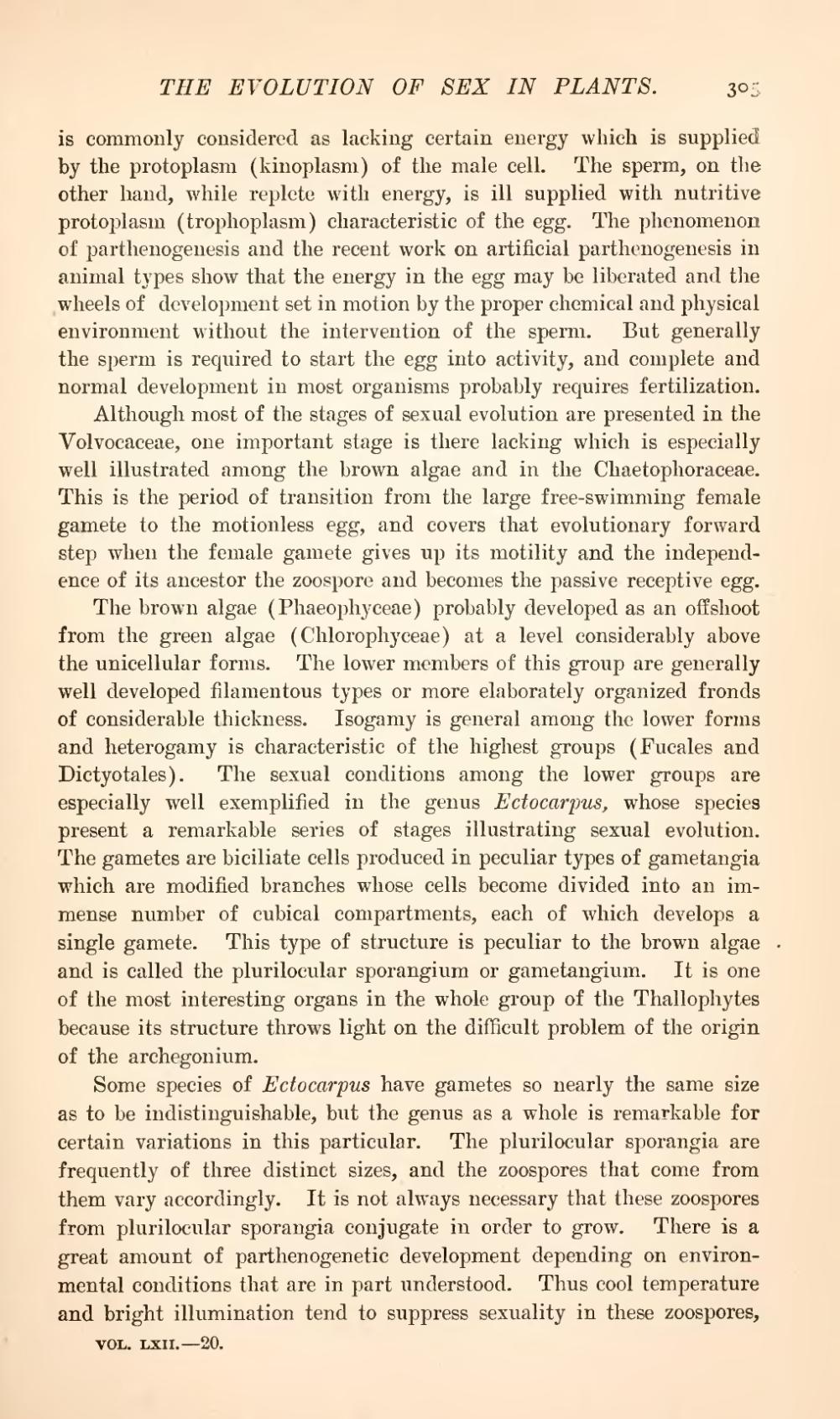is commonly considered as lacking certain energy which is supplied by the protoplasm (kinoplasm) of the male cell. The sperm, on the other hand, while replete with energy, is ill supplied with nutritive protoplasm (trophoplasm) characteristic of the egg. The phenomenon of parthenogenesis and the recent work on artificial parthenogenesis in animal types show that the energy in the egg may be liberated and the wheels of development set in motion by the proper chemical and physical environment without the intervention of the sperm. But generally the sperm is required to start the egg into activity, and complete and normal development in most organisms probably requires fertilization.
Although most of the stages of sexual evolution are presented in the Volvocaceae, one important stage is there lacking which is especially well illustrated among the brown algae and in the Chaetophoraceae. This is the period of transition from the large free-swimming female gamete to the motionless egg, and covers that evolutionary forward step when the female gamete gives up its motility and the independence of its ancestor the zoospore and becomes the passive receptive egg.
The brown algae (Phaeophyceae) probably developed as an offshoot from the green algae (Chlorophyceae) at a level considerably above the unicellular forms. The lower members of this group are generally well developed filamentous types or more elaborately organized fronds of considerable thickness. Isogamy is general among the lower forms and heterogamy is characteristic of the highest groups (Fucales and Dictyotales). The sexual conditions among the lower groups are especially well exemplified in the genus Ectocarpus, whose species present a remarkable series of stages illustrating sexual evolution. The gametes are biciliate cells produced in peculiar types of gametangia which are modified branches whose cells become divided into an immense number of cubical compartments, each of which develops a single gamete. This type of structure is peculiar to the brown algae and is called the plurilocular sporangium or gametangium. It is one of the most interesting organs in the whole group of the Thallophytes because its structure throws light on the difficult problem of the origin of the archegonium.
Some species of Ectocarpus have gametes so nearly the same size as to be indistinguishable, but the genus as a whole is remarkable for certain variations in this particular. The plurilocular sporangia are frequently of three distinct sizes, and the zoospores that come from them vary accordingly. It is not always necessary that these zoospores from plurilocular sporangia conjugate in order to grow. There is a great amount of parthenogenetic development depending on environmental conditions that are in part understood. Thus cool temperature and bright illumination tend to suppress sexuality in these zoospores,
